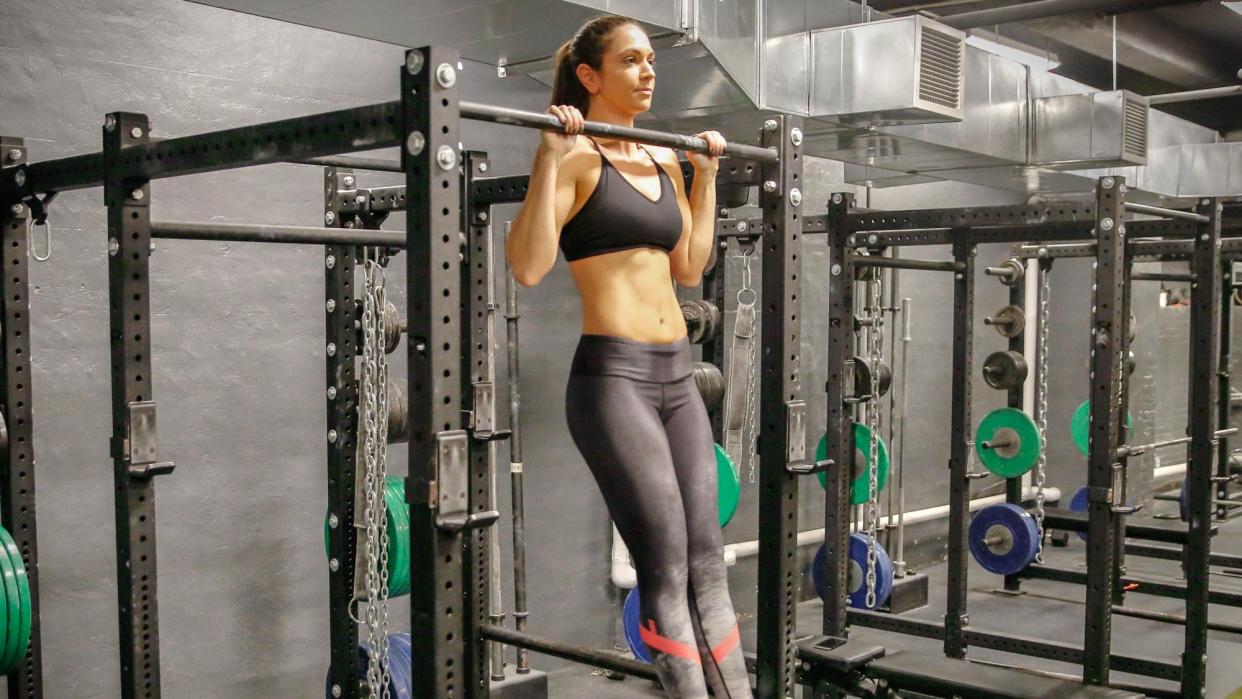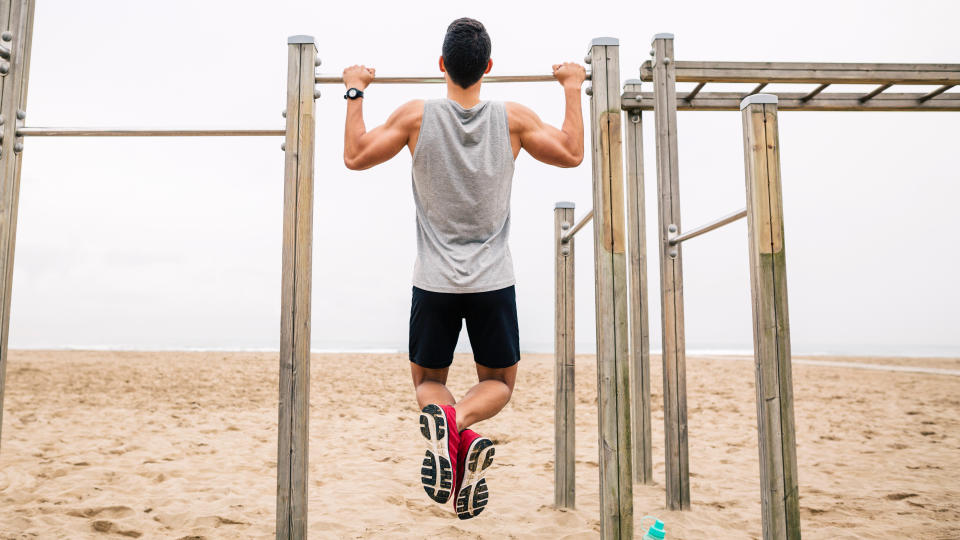I finally managed my first pull-up — here's what happened to my body

Pull-ups look like such an easy exercise. I've seen lots of Instagram videos where fitness pros gracefully lift their body weight through several reps of this deceptively challenging exercise, using their muscular strength to pull their body up to the bar.
But it really isn't as easy as it looks. I'm a personal trainer, and I feel fairly confident that most people couldn't do one without a lot of training, including me. That's why I decided I wanted to crack the bodyweight pull-up.
Not long ago, I attempted to do 100 chin-ups a day — a challenge that left my arms in tatters. And, although they seem similar, there's a big difference between pull-ups and chin-ups, so I knew I'd need to refocus and not rely on my past training.
Of course, it wasn't as straightforward as it looked. So, here's how I achieved my first pull-up, and what happened to my body along the way.
How to do a pull-up

Stand underneath a pull-up bar. Place your hands in an overhand grip (palms facing away from you) slightly wider than shoulder-width apart on the bar. If you can’t reach the bar, use a step or gym bench.
Raise your feet to place your body weight through your hands. Let yourself hang from the bar (without swinging), then engage your core and pull your shoulders back and down.
Using the muscles in your back, arms, and core, pull your body up towards the bar, bending your elbows. Stop when your chin is just over the bar.
Pause, then lower back down to the start, straightening out your arms as you do so. That's one repetition.
It sounds so easy on paper, but the truth is, on a first attempt, you may not be able to complete a full pull-up. But there are ways to make this easier, as I will explain.
I had to strengthen my upper body first
According to an article published in the journal Science & Sports, pull-ups work your biceps, upper back muscles, and pectoralis major, the largest muscle in the chest. So I knew I needed to strengthen these muscles to increase my chances of nailing a pull-up.
Jake Dearden, Represent 247 athlete and HYROX UK Master Trainer, explained to me that you need to make your training as specific as possible for any movement you are trying to get better at.
“There is merit in building strength in the muscles individually, but it is better to train them simultaneously in the same range of motion to be the most beneficial for your progress. For example, doing bicep curls will make your biceps stronger, but it is not the same movement as pulling your bodyweight up towards a bar.”
I became well acquainted with the assisted pull-up machine, which uses a counterweight to help you do a pull-up. The heavier the weight, the easier the pull-up. I also loved (and still love!) inverted rows, where you pull yourself up in a more horizontal position to a barbell in a squat rack.
Barbell bent over rows and machine-seated rows also really fired up my back muscles. Dearden recommends negative pull-ups, too. “These can be assisted or unassisted, but the focus is to start at the top of the movement and lower yourself down as slowly as possible.”
Bodyweight exercises can be tough
If you’re someone who turns their nose up at a bodyweight workout…well, stop. Because, despite there being no extra load, other than the weight of your own body, a pull-up is by far the hardest exercise I’ve ever tried to conquer.
The expressions I make as I use every ounce of my strength to pull my head and chest over a bar are so questionable that they’d be meme-worthy. Although I find bodyweight squats and lunges a doddle, anything that involves pulling my weight is a struggle.
It wasn't easy to switch from chin-ups to pull-ups
It took me several weeks and a lot of training to do a pull-up after getting so accustomed to chin-ups. But, as Dearden says, there are differences between pull-ups and chin-ups. The main difference is the grip you use on the bar.
“For a pull-up, you use an overhand, otherwise known as a pronated, grip. This means your palms face forward. For a chin-up, your hands are in an underhand (supinated) grip where your palms face towards you.” Because of this grip difference, they use similar muscles, but in different amounts.
“Pull-ups use your lats (latissimus dorsi) more, whereas a chin-up works your biceps and pectoral muscles more. Both will also use your core muscles to help stabilize your body as you pull your body weight up,” explains Dearden.
I have never felt stronger
Mastering a pull-up is satisfying, I won’t lie. I feel like a superwoman every time I hit the pull-up bar, even if I am only doing one to two reps. But hey, Rome wasn’t built in a day.
And because being strong helps in so many areas of your life, whether you’re carrying the shopping, playing with the kids, or unloading the car of boxes during a house move (as I recently discovered), building muscle is crucial for everyday activities.
There are different types of pull-ups (and they can get harder!)
While working towards achieving a standard pull-up, using a standard bar parallel to my body, Dearden told me there are different types of pull-up bars, including perpendicular and angled bars. In fact, I even tried (and managed) a pull-up on some gym rings, which I was amazed at.
"There are also versions with multiple bars that ascend in height for you to people pull yourself up from one to the other, but this is more advanced calisthenics training, and you definitely need to master the pull-up basics first before you start playing with that,” explains Dearden.
My verdict
Mastering a pull-up — and by this I mean one singular pull-up — was tough. I had to grit my teeth through several training sessions, and my arms and back experienced some serious burn. But if I can do it, you can too.
It takes patience, consistency, and also plenty of failures before you can finally do that first pull-up. It’s brutally hard, but so great when it’s done. And from then, it only starts to get easier. I promise!

